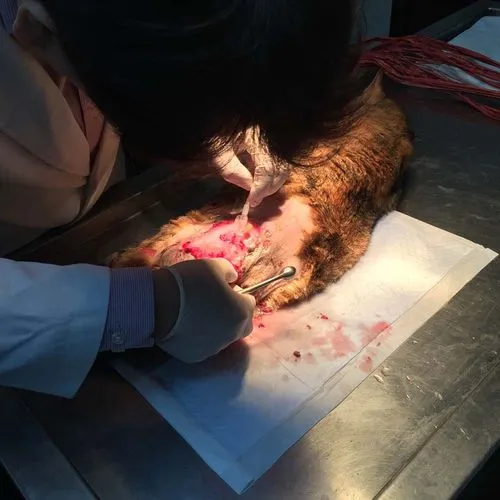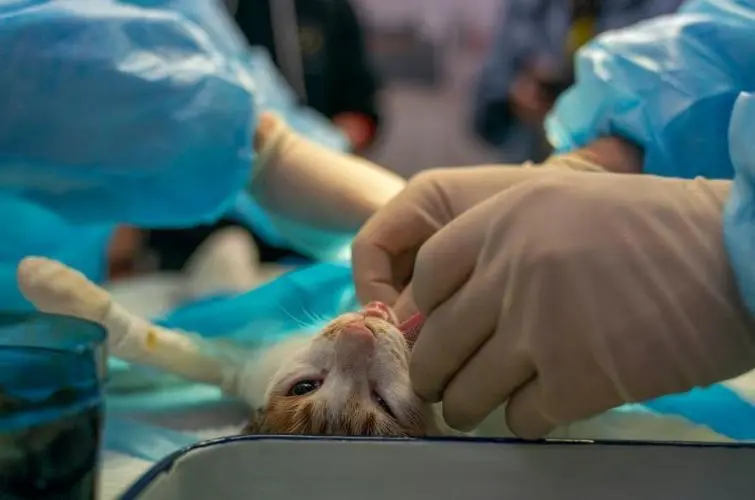Read the most popular articles viewed by our readersManaging stray cats with TNR: Public opinion and policy concernsRead the most popular articles viewed by our readers
The National Feline Research Council explores public support for trap-neuter-return (TNR) through various stray and feral cat management surveys and research studies.

As communities across the U.S. grapple with how best to manage their population of stray and “feral” cats, the trap-neuter-return (TNR) method is receiving increased attention — and policy makers want to know how the public feels about it.
What is TNR? How does trap-neuter-return work?
TNR is a non-lethal technique for managing unowned, free-roaming cats. The cats are humanely trapped, spayed or neutered by a licensed veterinarian, ear-tipped (the universal sign that they have been sterilized), and returned to where they were trapped. In addition, many TNR programs also vaccinate cats against the rabies virus and three common viruses in cats (feline viral rhinotracheitis, calicivirus, and panleukopenia virus) through what’s known as the FVRCP vaccine.
Is TNR a public policy issue?
Like all animal sheltering issues, how best to manage unowned, free-roaming cats is a matter of public policy and as such, heavily influenced by public opinion. Residents — whose tax dollars typically fund shelter facilities and staff — play a key role in which options are discussed, debated, and, ultimately, adopted as official policy (often, though not always, codified in law).
The following analysis reviews the results of various surveys intended to investigate public sentiment and support for TNR and, more generally, free-roaming cats.
How do “regular folks” feel about TNR?
Local news reports regularly describe passionate debates over free-roaming cats and how best to control their numbers. Often, these reports describe a “growing problem” while providing little, if any, evidence. Policy makers can easily find themselves caught in the middle, unsure of TNR’s merits and public support.
Unfortunately, relatively few rigorous surveys have been conducted to investigate public sentiment surrounding TNR (or other methods of managing free-roaming cats for that matter). Furthermore, some of the existing surveys have been poorly designed, producing misleading results.

Public support for TNR
In a national survey commissioned by Best Friends Animal Society and conducted by Luntz Global in 2014, respondents were presented with the following scenario:
“Suppose that most of the stray and ‘feral’ cats entering your local animal shelter were killed there, either because they’re not adoptable or because the shelter needs the space for other animals.”
Respondents were then asked to choose from among the following three options “for managing the population of these cats in your community”:
Sterilize and vaccinate healthy stray cats, and return them to where they were captured (sometimes called trap-neuter-return);
Impoundment by shelter staff, followed by lethal injection for any cats not adopted; or
Do nothing/leave stray cats alone to fend for themselves.
Sixty-eight percent chose TNR, while 24% chose impoundment/lethal injection, and the remaining 8% indicated that they would prefer nothing be done about the cats [1]. A nearly identical survey was conducted in 2017, with nearly identical results [1]. Similar levels of support have been reported from surveys conducted in Ohio [2] and Guelph, Ontario [3].
A number of surveys have found lower levels of public support for TNR. As with all surveys, however, it’s important to consider the precise wording and general framing of the issue when interpreting any results.
One survey, for example, combined lethal (“humanely put to sleep”) and non-lethal methods (“adopted out to a home”) under the single category “removal” [4,5]. Under those circumstances, there’s simply no way to interpret respondents’ true intentions. Other surveys [6,7] offered respondents unrealistic options for efficiently managing their community’s free-roaming cat populations (e.g., sanctuaries, long-term no-kill shelters), thereby limiting the extent to which results could be accurately interpreted. Even in these examples, however, a significant majority of respondents chose the non-lethal options presented [1].
Surveys showing a preference for lethal methods
A review of the relevant literature reveals a few survey results indicating that lethal methods are more popular than non-lethal methods. These surveys, however, suffer from basic design flaws that undermine their results. The most common flaw is sampling that doesn’t represent the general public (e.g., including disproportionate numbers of rural residents or hunters) [8–11]. Surveys incorporating such flaws are of little value to policy makers interested in better understanding the general public’s opinion on the topic of TNR.
Related studies indicating compassion for “strays”
TNR support can be seen as an extension of the public’s generally compassionate attitude toward “stray” cats (and dogs). Surveys typically find that more than one in 10 households feed stray cats, for example, at least occasionally.
According to the American Pet Products Association, 25% of pet cats are obtained directly from the ‘stray’ population
Although such survey results vary considerably, ranging from 11–26% [2,12–14], even the low-end rate suggests that this is a relatively common practice in the U.S. Plus, results of the American Pet Products Association’s 2017–2018 National Pet Owners Survey found that 25% of pet cats are obtained directly from the “stray” population [15]. These findings are likely rooted in the same attitudes and beliefs underlying the public’s preference for non-lethal methods of population control and TNR in particular.
Indeed, the authors of a study investigating the effectiveness of TNRon the campus of a research hospital noted a “long-standing practice of [patients] feeding leftover food to the cats” in violation of posted rules, as well as their tendency to release cats caught in traps for the purpose of lethal removal. The subsequent TNR program, on the other hand, received strong support from patients [16].
How public sentiment shapes public policy
The positive public support reflected in the surveys described above has, in communities across the country, translated into policies and practices amenable to TNR programs for managing stray cats.
Related resources
What to do with feral cats: Examining TNR for population management
References
Wolf, P.J.; Schaffner, J.E. The Road to TNR: Examining Trap-Neuter-Return Through the Lens of Our Evolving Ethics.Frontiers in Veterinary Science2019,5, 341.
Lord, L.K. Attitudes toward and perceptions of free-roaming cats among individuals living in Ohio. Journal of the American Veterinary Medical Association2008,232, 1159–1167.
Van Patter, L.; Flockhart, T.; Coe, J.; Berke, O.; Goller, R.; Hovorka, A.; Bateman, S. Perceptions of community cats and preferences for their management in Guelph, Ontario I: A quantitative analysis. Canadian Veterinary Journal2019,60, 41–47.
Ash, S.J. Ecological and sociological considerations of using the TTVAR (trap, test, vaccinate, alter, return) method to control free-ranging domestic cat, Felis catus, populations. Ph.D., Texas A&M University, 2001.
Ash, S.J.; Adams, C.E. Public Preferences for Free-Ranging Domestic Cat (Felis catus) Management Options. Wildlife Society Bulletin2003,31, 334–339.
Loyd, K.A.T.; Hernandez, S.M. Public Perceptions of Domestic Cats and Preferences for Feral Cat Management in the Southeastern United States. Anthrozoös2012,25, 337–351.
Wald, D.M.; Jacobson, S.K.; Levy, J.K. Outdoor cats: Identifying differences between stakeholder beliefs, perceived impacts, risk and management. Biological Conservation2013,167, 414–424.
Loyd, K.A.T.; Miller, C.A. Influence of Demographics, Experience and Value Orientations on Preferences for Lethal Management of Feral Cats. Human Dimensions of Wildlife: An International Journal2010,15, 262–273.
Miller, C.A.; Anderson, W.L.; Campbell, L.K.; Leiter, P.D. Results of the Wildlife and Conservation in Illinois Survey (2004); Illinois Department of Natural Resources, 2007; pp. 38.
Lohr, C.A.; Lepczyk, C.A. Desires and Management Preferences of Stakeholders Regarding Feral Cats in the Hawaiian Islands. Conservation Biology2014,28, 392–403.
Lohr, C.A. Human dimensions of introduced terrestrial vertebrates in the Hawaiian Islands, University of Hawaii at Manoa, 2012.
Levy, J.K.; Isaza, N.M.; Scott, K.C. Effect of high-impact targeted trap-neuter-return and adoption of community cats on cat intake to a shelter. The Veterinary Journal2014,201, 269–274.
APPA 2015–2016 APPA National Pet Owners Survey; American Pet Products Association, 2017.
Levy, J.K.; Woods, J.E.; Turick, S.L.; Etheridge, D.L. Number of unowned free-roaming cats in a college community in the southern United States and characteristics of community residents who feed them. Journal of the American Veterinary Medical Association2003,223, 202–205.
APPA 2017–2018 APPA National Pet Owners Survey; American Pet Products Association: Stamford, CT, 2018.
Zaunbrecher, K.I.; Smith, R.E. Neutering of feral cats as an alternative to eradication programs. Journal of the American Veterinary Medical Association1993,203, 449–452.




